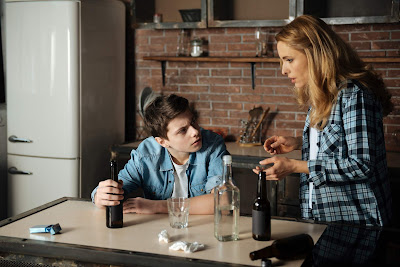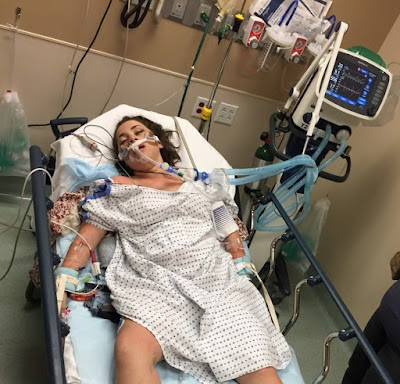Why don't the ASSAD Surveys' results always match our personal experience?
The 2011 Australian Secondary School Alcohol and Drug (ASSAD) survey was released today and for the next few years these figures will be used by a wide variety of people to describe what is going on amongst high school students in terms of alcohol and other drug use. I use the ASSAD data all the time - it is a great piece of research that provides some really useful information - but the response I get from many people I speak to, whether it be teachers, parents or those who work with young people in other sectors, is that the results simply don't match their experience.
For the purposes of this post I'll be looking at just the illicit drug use, we'll leave the alcohol, tobacco and over-the-counter information for another day ...
Once again, the data shows quite clearly that the majority of Australian secondary school students do not use illicit drugs. Here are just a few of the key findings:
Before we try to work out why there is this disparity, let's take a look at the survey a little more closely. This is the tenth survey in the series (and sixth to include questions on the use of over-the-counter and illicit substances) with just under 25,000 students aged between 12 and 17 years taking part in 2011. Students from government, Catholic and independent schools took part in this study with 893 schools invited to participate, with the aim to survey students from 414 schools across the country. That makes it a pretty good study - it has a more than decent sample size, it's collected across the three main education sectors and it has a random sampling methodology.
So, back to the reasons for the difference ...
Firstly, and most importantly, this is a survey of school-based young people, not Australian teenagers. Many youth workers, as well as others who work in health and law enforcement who come in contact with young people, usually see those who are no longer 'connected' to school. Those teens are not represented in this survey. These young people are much more likely to have used, or be currently using, illicit drugs and because they are often much more visible and their behaviour more extreme, they attract much more attention.
In the school setting the so-called 'druggie' group is usually labelled that way by teachers and students alike due to the behaviour they exhibit. They often talk loudly about their exploits, whether they be true or not, and they fit all the usual stereotypes. Even though the group may be small in number it often seems as if there are a lot of them simply because they are so loud and obvious. I can't tell you how many times I have been told by a well-meaning teacher that a particular year group has a 'drug problem' and when asked what evidence they have to support this the only response is 'we hear talk'! I'm certainly not saying to ignore gut feelings, but if you're concerned about possible drug use, get good evidence before you jump to conclusions ...
Finally, always remember that you can use statistics selectively to tell the story you want to get across. I believe in telling a positive story - saying that 85.2% of the sample had not used cannabis sends an affirming prevention message to those young people who choose not to use drugs, letting them know that they are not alone in their decision not to use. If I wanted to tell a different story and see the problems, I could say that one in five 15 year old Australian males have ever used cannabis, and over a quarter of 16 year old and one third of 17 year old males also reported using the drug at some time in their lives. Pretty depressing stuff if I wanted it to be ...
Overall, this survey tells a very positive story, i.e., illicit drug use is not the norm amongst Australian secondary school students. This doesn't make sense to some people who work with young people or have family members who experience great problems with their drug use. Look at the report a little more closely however and you will see that those young people who do use illicit drugs are indeed represented, but they are in the minority in this sample. Even though the figures may not match your personal experience, try to have an open mind and, at the same time, acknowledge that school-based young people are a diverse group, many of whom are simply not interested in illict drug use at this time of their lives.
For the purposes of this post I'll be looking at just the illicit drug use, we'll leave the alcohol, tobacco and over-the-counter information for another day ...
Once again, the data shows quite clearly that the majority of Australian secondary school students do not use illicit drugs. Here are just a few of the key findings:
- in terms of lifetime drug use, rates were either stable or decreasing for all illicit drug use (apart for cannabis) when compared to the 2008 ASSAD survey among 12-17 year old students
- lifetime cannabis use had risen from 13.6% in 2008 to 14.8% in 2011
- 15.6% of 12-17 year old students reported using any illicit drug, including cannabis, in their lifetime. Excluding cannabis use, just 6.5% of students reported using any illicit drug in their lifetime
Before we try to work out why there is this disparity, let's take a look at the survey a little more closely. This is the tenth survey in the series (and sixth to include questions on the use of over-the-counter and illicit substances) with just under 25,000 students aged between 12 and 17 years taking part in 2011. Students from government, Catholic and independent schools took part in this study with 893 schools invited to participate, with the aim to survey students from 414 schools across the country. That makes it a pretty good study - it has a more than decent sample size, it's collected across the three main education sectors and it has a random sampling methodology.
So, back to the reasons for the difference ...
Firstly, and most importantly, this is a survey of school-based young people, not Australian teenagers. Many youth workers, as well as others who work in health and law enforcement who come in contact with young people, usually see those who are no longer 'connected' to school. Those teens are not represented in this survey. These young people are much more likely to have used, or be currently using, illicit drugs and because they are often much more visible and their behaviour more extreme, they attract much more attention.
In the school setting the so-called 'druggie' group is usually labelled that way by teachers and students alike due to the behaviour they exhibit. They often talk loudly about their exploits, whether they be true or not, and they fit all the usual stereotypes. Even though the group may be small in number it often seems as if there are a lot of them simply because they are so loud and obvious. I can't tell you how many times I have been told by a well-meaning teacher that a particular year group has a 'drug problem' and when asked what evidence they have to support this the only response is 'we hear talk'! I'm certainly not saying to ignore gut feelings, but if you're concerned about possible drug use, get good evidence before you jump to conclusions ...
Finally, always remember that you can use statistics selectively to tell the story you want to get across. I believe in telling a positive story - saying that 85.2% of the sample had not used cannabis sends an affirming prevention message to those young people who choose not to use drugs, letting them know that they are not alone in their decision not to use. If I wanted to tell a different story and see the problems, I could say that one in five 15 year old Australian males have ever used cannabis, and over a quarter of 16 year old and one third of 17 year old males also reported using the drug at some time in their lives. Pretty depressing stuff if I wanted it to be ...
Overall, this survey tells a very positive story, i.e., illicit drug use is not the norm amongst Australian secondary school students. This doesn't make sense to some people who work with young people or have family members who experience great problems with their drug use. Look at the report a little more closely however and you will see that those young people who do use illicit drugs are indeed represented, but they are in the minority in this sample. Even though the figures may not match your personal experience, try to have an open mind and, at the same time, acknowledge that school-based young people are a diverse group, many of whom are simply not interested in illict drug use at this time of their lives.



Comments
Post a Comment